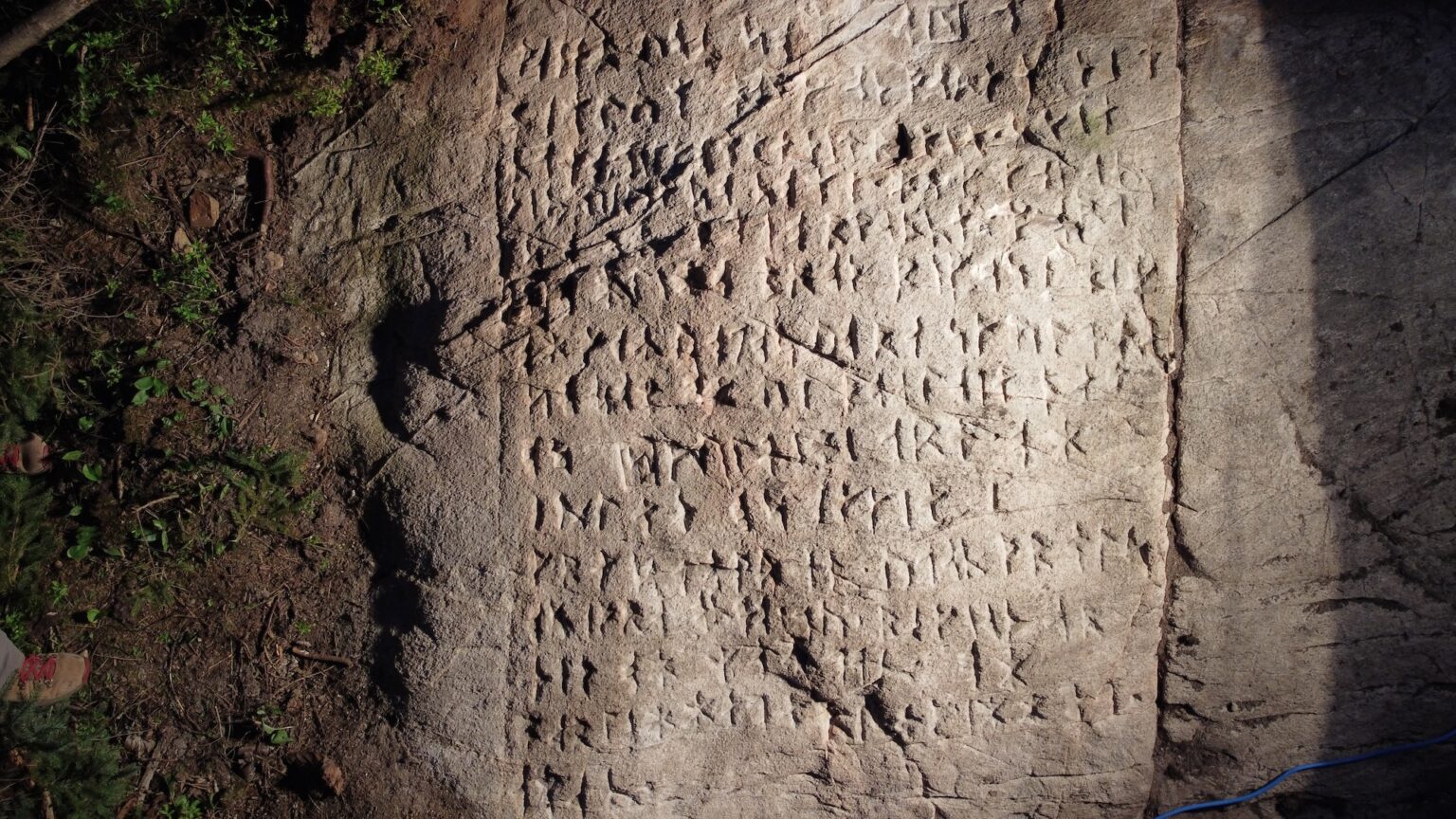
Subscribe to the Daily Science Digest💡
Stay updated with breakthroughs, discoveries, and DIY tips delivered every weekday.
Deep within the remote wilderness of Canada, archaeologists have uncovered an enigmatic artifact that has left experts puzzled for years. After extensive investigation, a multidisciplinary team has finally shared their insights with the public. Hidden in a forest approximately 730 kilometers (around 455 miles) northwest of Ottawa, a large bedrock slab bears a meticulously etched depiction of the Lord’s Prayer. Remarkably, this religious inscription isn’t rendered in modern languages like French or English; instead, it comprises over 250 symbols from the ancient runic alphabet known as Futhark.
The discovery was entirely accidental, as reported by CBC. The stone remained concealed beneath the soil for centuries until a fallen tree near the town of Wawa, close to Lake Superior, revealed it. Upon closer examination, researchers identified 255 runes carved into a roughly 4 by 5-foot section of the stone. The etching also includes a detailed illustration of a boat, 16 additional runic symbols, and 14 markings resembling X’s.
Images of the site quickly reached Ryan Primrose, president of the Ontario Center for Archaeological Education, who was immediately captivated by the photographs.
“This ranks among the most unexpected discoveries I’ve encountered in my career. It’s truly extraordinary,” Primrose remarked to CBC.

Decoding the Futhark Runes
Primrose emphasized caution before jumping to conclusions about the inscription’s origins. While Vikings did explore parts of what is now Canada thousands of years ago, he was skeptical that they were responsible for this particular artifact.
“We wanted to ensure thorough analysis before making any public statements,” he explained.
He reached out to Henrik Williams, an emeritus professor of runology at Uppsala University, who was invited to examine the site in October of the following year.
“I spent three hours under a tarp, flashlight in hand, scrutinizing the runes while others waited outside in the cold,” Williams recalled.

Persistence paid off. Williams confirmed that the inscription was created using Futhark runes, a script developed by Germanic tribes between the 2nd and 8th centuries CE. Over time, Futhark evolved into a simplified form adopted by Scandinavian peoples. Variants of the runic alphabet also appeared among Anglo-Saxons and Frisians, but by the High Middle Ages (roughly 1000-1300 CE), the original script had fallen out of common use. It wasn’t until 1865 that Norwegian scholar Sophus Bugge successfully deciphered the long-lost language.
Interest in runes persisted across Europe, especially during the early 17th century when Swedish polymath Johannes Bureus incorporated the symbols into a system aligned with the Swedish language. This culminated in the publication of a Swedish-language Lord’s Prayer written entirely in runes in 1611. Yet, the story of the Canadian inscription doesn’t end there.

A Contemporary Connection
Primrose speculates that the individual who carved the inscription was likely of Swedish origin. “Were there any Swedes present here?” he wondered.
Historical records indicate that during the 19th century, the Hudson’s Bay Company employed Swedish workers at trading posts across Canada. Interestingly, Bureus’ runic Lord’s Prayer was also reprinted during this period.
Based on this evidence, Primrose and his team hypothesize that a Hudson’s Bay Company employee-or group of workers-may have undertaken the labor-intensive task, which probably took days or even weeks to complete.
Discussions are now underway with local landowners to establish a protected heritage site around the stone, including a shelter to shield it from weathering.
While Primrose admits a slight disappointment that the artifact is only a few centuries old, many questions remain unanswered. Was the site a place of worship, or was the inscription a personal devotional act? The bedrock was buried beneath soil before its discovery, and no other artifacts have been found nearby. Was the prayer intentionally concealed, or was it simply lost to time?
“The mystery persists despite the relatively recent age. Why was it carved here? Why this particular text? These questions remain unanswered,” he said. “And that’s what makes it so compelling-mysteries always captivate us.”

